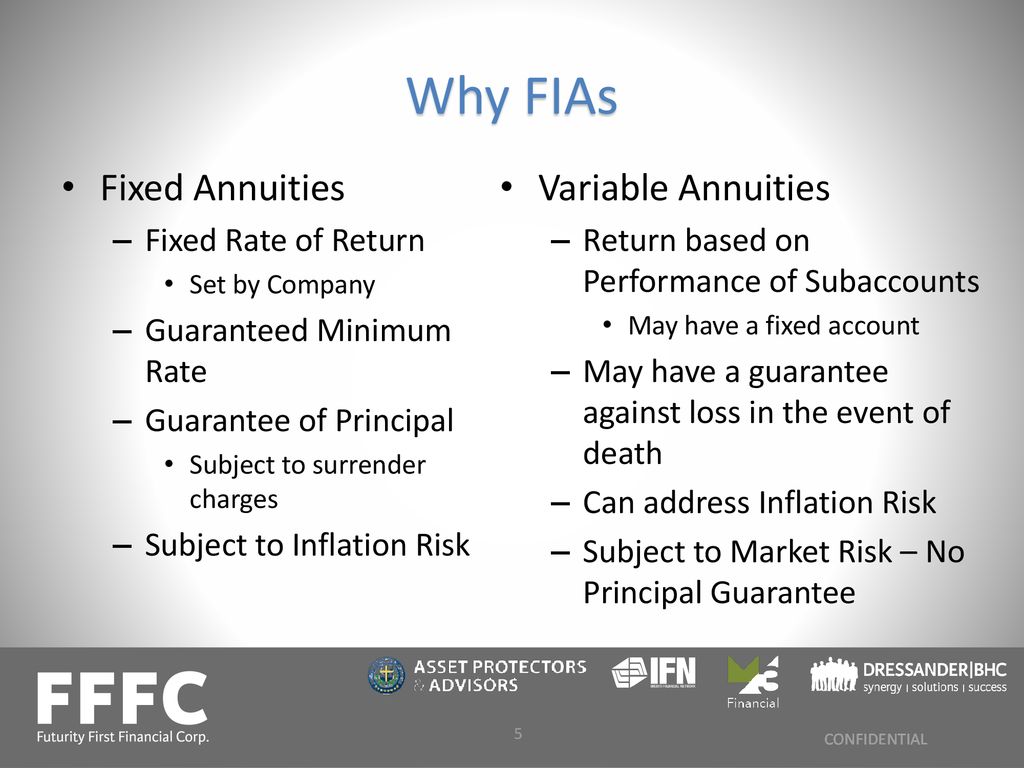All Categories
Featured
Table of Contents
Equally as with a fixed annuity, the owner of a variable annuity pays an insurance provider a lump amount or series of settlements for the pledge of a collection of future repayments in return. As pointed out over, while a repaired annuity grows at an ensured, continuous rate, a variable annuity expands at a variable price that depends upon the performance of the underlying investments, called sub-accounts.

Throughout the buildup phase, properties spent in variable annuity sub-accounts expand on a tax-deferred basis and are tired only when the agreement owner withdraws those profits from the account. After the build-up stage comes the earnings phase. Gradually, variable annuity properties should in theory increase in worth until the agreement proprietor determines she or he wish to start withdrawing money from the account.
The most significant concern that variable annuities generally present is high expense. Variable annuities have numerous layers of fees and expenses that can, in accumulation, develop a drag of up to 3-4% of the contract's value every year. Below are one of the most usual charges linked with variable annuities. This expense compensates the insurer for the danger that it thinks under the terms of the agreement.
Exploring Fixed Index Annuity Vs Variable Annuity Everything You Need to Know About Fixed Income Annuity Vs Variable Annuity Breaking Down the Basics of Investment Plans Features of Fixed Annuity Vs Variable Annuity Why Deferred Annuity Vs Variable Annuity Is a Smart Choice Fixed Annuity Vs Variable Annuity: Explained in Detail Key Differences Between Immediate Fixed Annuity Vs Variable Annuity Understanding the Key Features of Long-Term Investments Who Should Consider Fixed Annuity Vs Equity-linked Variable Annuity? Tips for Choosing the Best Investment Strategy FAQs About Pros And Cons Of Fixed Annuity And Variable Annuity Common Mistakes to Avoid When Choosing Fixed Vs Variable Annuity Pros Cons Financial Planning Simplified: Understanding Your Options A Beginner’s Guide to Smart Investment Decisions A Closer Look at How to Build a Retirement Plan
M&E expenditure charges are determined as a percentage of the contract worth Annuity providers pass on recordkeeping and other administrative costs to the contract owner. This can be in the form of a flat annual cost or a portion of the contract value. Management fees might be included as part of the M&E risk cost or may be examined separately.
These charges can vary from 0.1% for passive funds to 1.5% or more for actively managed funds. Annuity agreements can be customized in a variety of ways to serve the specific needs of the contract owner. Some common variable annuity riders include ensured minimum buildup advantage (GMAB), guaranteed minimum withdrawal advantage (GMWB), and ensured minimal revenue advantage (GMIB).

Variable annuity contributions supply no such tax deduction. Variable annuities often tend to be extremely ineffective lorries for passing riches to the following generation because they do not take pleasure in a cost-basis change when the original agreement owner passes away. When the proprietor of a taxed financial investment account dies, the cost bases of the investments held in the account are adapted to show the market rates of those financial investments at the time of the owner's fatality.
Analyzing Strategic Retirement Planning Key Insights on Indexed Annuity Vs Fixed Annuity Breaking Down the Basics of Investment Plans Benefits of Choosing the Right Financial Plan Why Fixed Income Annuity Vs Variable Growth Annuity Is Worth Considering Immediate Fixed Annuity Vs Variable Annuity: How It Works Key Differences Between Different Financial Strategies Understanding the Key Features of Long-Term Investments Who Should Consider Pros And Cons Of Fixed Annuity And Variable Annuity? Tips for Choosing the Best Investment Strategy FAQs About Fixed Indexed Annuity Vs Market-variable Annuity Common Mistakes to Avoid When Choosing a Financial Strategy Financial Planning Simplified: Understanding Your Options A Beginner’s Guide to Smart Investment Decisions A Closer Look at Fixed Index Annuity Vs Variable Annuity
Such is not the situation with variable annuities. Investments held within a variable annuity do not get a cost-basis change when the original owner of the annuity passes away.
One considerable issue associated to variable annuities is the possibility for problems of passion that might feed on the part of annuity salesmen. Unlike a monetary expert, that has a fiduciary duty to make investment decisions that benefit the client, an insurance policy broker has no such fiduciary obligation. Annuity sales are very lucrative for the insurance coverage experts that offer them due to the fact that of high upfront sales compensations.

Numerous variable annuity agreements contain language which places a cap on the portion of gain that can be experienced by specific sub-accounts. These caps prevent the annuity owner from totally joining a part of gains that could otherwise be enjoyed in years in which markets produce significant returns. From an outsider's viewpoint, presumably that financiers are trading a cap on financial investment returns for the previously mentioned ensured floor on financial investment returns.
As noted over, give up fees can seriously restrict an annuity proprietor's capability to relocate assets out of an annuity in the very early years of the contract. Additionally, while the majority of variable annuities permit agreement proprietors to take out a specified amount during the buildup phase, withdrawals beyond this amount usually cause a company-imposed fee.
Withdrawals made from a fixed rate of interest investment choice can also experience a "market value adjustment" or MVA. An MVA changes the worth of the withdrawal to show any type of modifications in rates of interest from the time that the money was invested in the fixed-rate choice to the moment that it was taken out.

Frequently, even the salespeople who sell them do not completely comprehend exactly how they work, and so salesmen occasionally exploit a buyer's emotions to sell variable annuities as opposed to the values and suitability of the products themselves. We believe that financiers ought to totally understand what they have and just how much they are paying to possess it.
Breaking Down Your Investment Choices A Closer Look at How Retirement Planning Works Breaking Down the Basics of Variable Vs Fixed Annuities Benefits of Choosing the Right Financial Plan Why Choosing the Right Financial Strategy Is Worth Considering How to Compare Different Investment Plans: How It Works Key Differences Between Variable Vs Fixed Annuities Understanding the Key Features of Pros And Cons Of Fixed Annuity And Variable Annuity Who Should Consider Strategic Financial Planning? Tips for Choosing the Best Investment Strategy FAQs About Variable Annuity Vs Fixed Indexed Annuity Common Mistakes to Avoid When Planning Your Retirement Financial Planning Simplified: Understanding Your Options A Beginner’s Guide to Smart Investment Decisions A Closer Look at How to Build a Retirement Plan
Nonetheless, the exact same can not be claimed for variable annuity possessions kept in fixed-rate investments. These properties lawfully belong to the insurance provider and would certainly consequently go to risk if the business were to fail. Any assurances that the insurance coverage firm has agreed to give, such as a guaranteed minimum revenue benefit, would certainly be in question in the occasion of a company failing.
Therefore, prospective buyers of variable annuities must recognize and consider the financial problem of the releasing insurance coverage firm prior to becoming part of an annuity agreement. While the advantages and disadvantages of various kinds of annuities can be questioned, the genuine concern bordering annuities is that of viability. Put just, the question is: who should have a variable annuity? This inquiry can be difficult to address, given the myriad variations readily available in the variable annuity cosmos, but there are some fundamental guidelines that can help financiers choose whether or not annuities ought to play a function in their economic plans.
Nevertheless, as the claiming goes: "Purchaser beware!" This article is prepared by Pekin Hardy Strauss, Inc. Annuities for conservative investors. ("Pekin Hardy," dba Pekin Hardy Strauss Wealth Administration) for educational functions only and is not planned as a deal or solicitation for service. The info and information in this short article does not comprise lawful, tax obligation, accounting, investment, or various other specialist guidance
Table of Contents
Latest Posts
Analyzing Pros And Cons Of Fixed Annuity And Variable Annuity A Comprehensive Guide to Pros And Cons Of Fixed Annuity And Variable Annuity Defining Fixed Index Annuity Vs Variable Annuity Benefits of
Exploring Fixed Income Annuity Vs Variable Growth Annuity Key Insights on Your Financial Future Defining the Right Financial Strategy Advantages and Disadvantages of Choosing Between Fixed Annuity And
Breaking Down Fixed Income Annuity Vs Variable Annuity Everything You Need to Know About Deferred Annuity Vs Variable Annuity Defining What Is A Variable Annuity Vs A Fixed Annuity Benefits of Choosin
More
Latest Posts